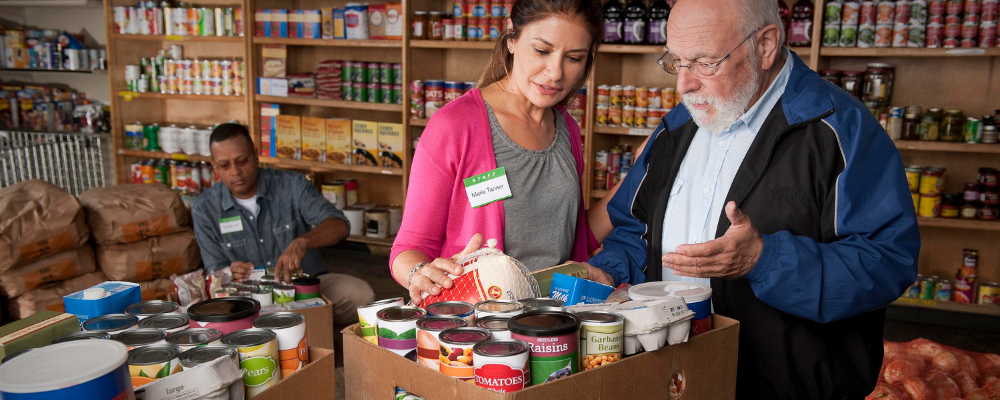
7 Ways to Support Local Food Pantries
— Kate Yerxa, Extension Educator, University of Maine Cooperative Extension
Food pantries and community organizations play a role in improving the food and nutrition security of Mainers. Donating to these organizations through individual and group efforts is a way to help make a positive impact in the areas where you live. Before you donate or hold a food drive, we have pulled together seven guidelines and best practices for supporting your local food pantry to ensure you or your organization donates safe, healthy foods.
1. Check with the food pantry first
Before donating, contact the food pantry or check their website to see what types of food items they accept. Some pantries have specific guidelines or restrictions about foods and items they will accept. Do not donate items that are damaged, dented, or in compromised packaging. If you are not sure if a can of food is safe to donate, use the UMaine Cooperative Extension publication Is This Can Safe To Use? and the publication Food Safety for Food Pantry Donations to help ensure the safety of the food you collect for a food drive and then donate.
2. Ask about monetary donations
While donating food items is crucial, monetary donations can also make a significant impact. Monetary donations may allow food pantries to purchase fresh and perishable items, as well as other essential supplies.
3. Choose nutritious and non-perishable items
Opt for non-perishable food items that are nutrient-rich and contribute to healthful meals. Examples include low sodium canned vegetables, canned fruits in juice, whole grains like brown rice and whole wheat pasta, canned lean proteins like tuna or beans, and low-sodium soups. You can find more examples of healthy food donations in the Food Pantry Wish List publication.
4. Support seasonal needs and seasonal foods
Pantries often have specific seasonal needs, such as holiday specific donations or items that are in high demand during certain times of the year. In Maine, community groups or home gardeners may want to donate produce grown in their gardens or organize gleaning opportunities so fresh produce doesn’t go to waste during the growing season. UMaine Cooperative Extension has developed the publications Food for Your Community: Gleaning and Sharing, Steps to Organizing Your Community Garden and A Donor’s Guide to Vegetable Harvest that can help guide your work in this area.
5. Consider dietary preferences and restrictions
Many individuals have specific dietary needs or restrictions, such as allergies, vegetarian/vegan preferences, or religious or cultural considerations. If you communicate with the food pantry before donating, they can let you know their patrons’ specific needs.
6. Donate non-food items
Non-food items, such as toiletries, personal hygiene products, or cooking utensils or can openers which can be in short supply at some pantries.
7. Volunteer your time
If you’re not able to donate food, consider volunteering your time. Many food pantries rely on volunteers to sort donations, stock shelves, and distribute food. Becoming more involved in the needs of a food pantry through volunteering allows you to more confidently share information and communicate specific needs to friends, family, and community groups resulting in greater donations and support.
Donating to food pantries is a wonderful way to support individuals and families in your community. By using these guidelines, you can ensure that your donations are appropriate, helpful, and contribute to promoting healthier food options for those who use food pantries to improve the nutrition security of their households.
Resources
- Bulletin #4306 Is This Can Safe To Use?
- Bulletin #4302 Food Safety for Food Pantry Donations
- Bulletin #4304 Food Pantry Wish List
- Bulletin #4301 Food For Your Community: Gleaning and Sharing
- Bulletin #4300 Steps to Organizing Your Community Garden
- Bulletin #4303 A Donor’s Guide to Vegetable Harvest
